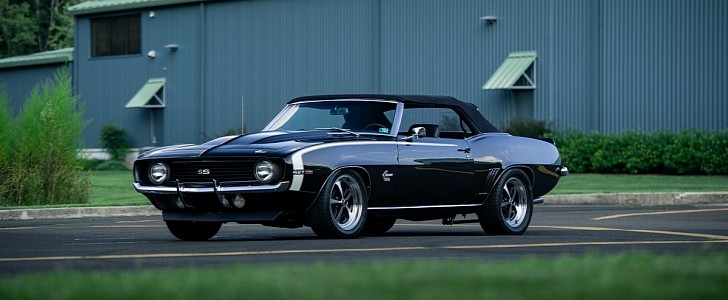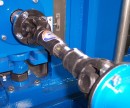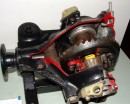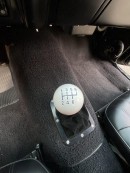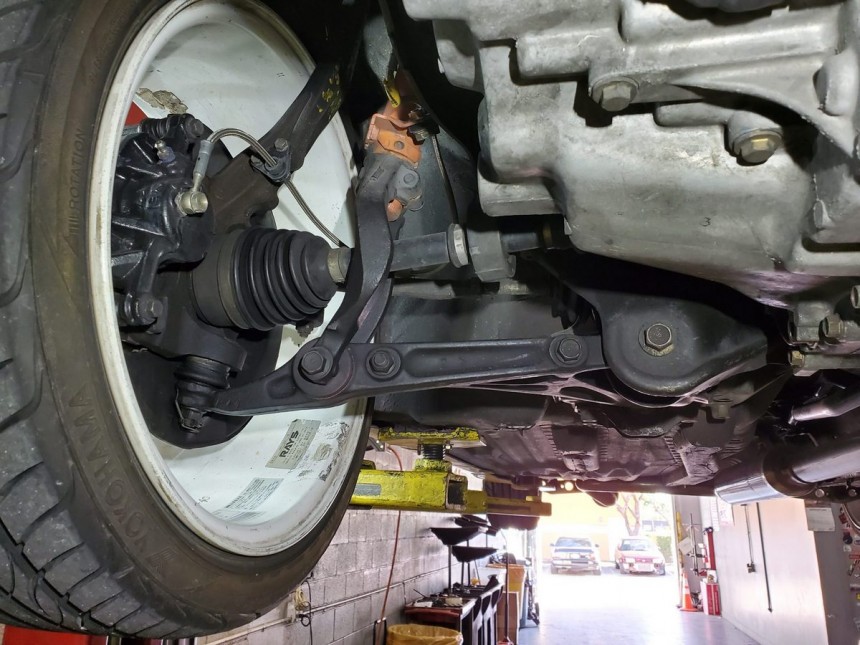I've seen many people forgetting about transmission when upgrading a car, and ending up calling a tow truck the same day they turned on the newly improved engine. And all of them told me that they should've upgraded the transmission first.
Basically, everything between the engine and the wheels that transmits torque is part of the transmission. If there is a weak spot between the crankshaft and the wheels, that would be the place where the transmission will fail. Either if it's a clutch, a bearing, or a driveshaft, something could, and will, break.
In a standard vehicle with a stock engine and transmission, engineers did all the math. They decided which materials and design to use, so the vehicle could run well over 100,000 miles with proper maintenance. Sure, there are several instances when their calculations were wrong, but most of the time, they proved to be correct. When an owner decides to upgrade his car's performance, then those numbers won't add up any more. Considering this, let's focus on the transmission.
If you have an automatic transmission, you may skip to the third paragraph. For now, I will focus on three-pedal cars. For starters, most cars have a gearstick with certain components, making gear changes softer and more effortless. Unfortunately, this leads to longer gear lever travels, and manual-gearbox Ford Focus drivers know what that means. You hit the center stack with your knuckles for first and third gear, and your elbow for second and third on that vehicle. That requires a short-throw system, which will reduce that useless gear lever travel.
The primary connection between the engine and the gearbox is made through a clutch assembly. Here is one weak spot. The disc might hold well under normal driving conditions, but fast and repeated shifts might damage it sooner than you think. Moreover, nobody wants or likes a burnt disc while doing a quarter-mile run. If you already know how much power your engine will develop after it is upgraded (give or take some hp) and where you'd like to drive that vehicle, you can make the right choice.
First of all, if you want to drive the car on regular streets as a daily driver, don't go for the stage 3 clutch disc. Those are very good on a race track but horrible through everyday traffic. Not only that will make your master cylinder work harder, but also you'll end up having constant pains in the left leg. Go for stage 1 instead. That will allow you to drive the car with the regular engine and with further upgrades. Sure, if you plan to go on a track with that setup, it will last for a few laps. Last, but not least, if you have a five-speed gearbox, you might consider changing it to a six-speed.
If you have a CVT, your dream of a nicely tuned car ends here. For those with a regular automatic transmission with a torque converter, the first idea would be to make a software upgrade. The re-learning process sometimes works wonders on the Mercedes-Benz automatic transmissions, and not only for them. Choose wisely; go ahead and ask on forums. This is a crucial step where you can either end up with an upgraded car or a broken one that sits on a nice set of wheels.
If your plan is to upgrade the engine with up to 10% more power than the stock version, you won't need to upgrade the driveshaft or the shaft assembly. For many brands, though, these parts are the first to fail, especially on the front-wheel drive vehicles. If you're running a Honda and plan on turbocharging it, you have to replace them. And I'm telling you, the one from the driver's side is a mess to replace. So be prepared. Also, do thorough research for every part you buy. What you save now might cost you an arm and a leg later.
Before moving on to the engine compartment, you should consider a differential upgrade, regardless if it's a rear- or a front-wheel-drive vehicle. It will need a limited-slip differential (or Positronic) if the engine's output power is well above 250 hp like on most older Camaros. If it's just a regular Prius, just don't bother with anything other than exterior styling and interior upgrades.
Only after performing these steps you should move forward to upgrade the engine. Then, of course, you may skip the previous chapters of this Tuning 101 for the exterior and the interior and transform your ride into a sleeper.
In a standard vehicle with a stock engine and transmission, engineers did all the math. They decided which materials and design to use, so the vehicle could run well over 100,000 miles with proper maintenance. Sure, there are several instances when their calculations were wrong, but most of the time, they proved to be correct. When an owner decides to upgrade his car's performance, then those numbers won't add up any more. Considering this, let's focus on the transmission.
If you have an automatic transmission, you may skip to the third paragraph. For now, I will focus on three-pedal cars. For starters, most cars have a gearstick with certain components, making gear changes softer and more effortless. Unfortunately, this leads to longer gear lever travels, and manual-gearbox Ford Focus drivers know what that means. You hit the center stack with your knuckles for first and third gear, and your elbow for second and third on that vehicle. That requires a short-throw system, which will reduce that useless gear lever travel.
The primary connection between the engine and the gearbox is made through a clutch assembly. Here is one weak spot. The disc might hold well under normal driving conditions, but fast and repeated shifts might damage it sooner than you think. Moreover, nobody wants or likes a burnt disc while doing a quarter-mile run. If you already know how much power your engine will develop after it is upgraded (give or take some hp) and where you'd like to drive that vehicle, you can make the right choice.
If you have a CVT, your dream of a nicely tuned car ends here. For those with a regular automatic transmission with a torque converter, the first idea would be to make a software upgrade. The re-learning process sometimes works wonders on the Mercedes-Benz automatic transmissions, and not only for them. Choose wisely; go ahead and ask on forums. This is a crucial step where you can either end up with an upgraded car or a broken one that sits on a nice set of wheels.
If your plan is to upgrade the engine with up to 10% more power than the stock version, you won't need to upgrade the driveshaft or the shaft assembly. For many brands, though, these parts are the first to fail, especially on the front-wheel drive vehicles. If you're running a Honda and plan on turbocharging it, you have to replace them. And I'm telling you, the one from the driver's side is a mess to replace. So be prepared. Also, do thorough research for every part you buy. What you save now might cost you an arm and a leg later.
Before moving on to the engine compartment, you should consider a differential upgrade, regardless if it's a rear- or a front-wheel-drive vehicle. It will need a limited-slip differential (or Positronic) if the engine's output power is well above 250 hp like on most older Camaros. If it's just a regular Prius, just don't bother with anything other than exterior styling and interior upgrades.
